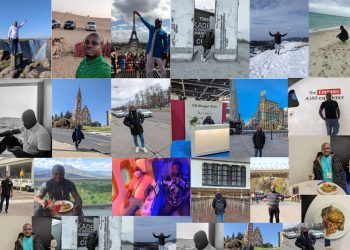About $30 million of the funding required for the construction of the newly built Terminal Three of the Kotoka International Airport (KIA) was sourced from oil revenues.
The figure, which represents 12 per cent of the total funding of the $250 million project, was from the Annual Budget Funding Account’s (ABFA’s) allocation to the Ghana Infrastructure Investment Fund’s (GIIF’s) in 2016. The remaining was sourced from Africa Development Bank and Development Bank of Southern Africa (DBSA).
The Chairman of the Public Interest and Accountability Committee (PIAC), Dr Stephen Manteaw, disclosed this at a workshop by the Institute of Financial and Economic Journalists (IFEJ) and German Development Corporation (GIZ) in Koforidua in the Eastern Region on February 16.
He said the new terminal, which had become a tourist attraction for many travellers, received $30 million allocation from the oil proceeds.
“The newly built terminal three received $30 million from the oil proceeds through GIIF but most Ghanaians were yet to be informed about it. This is in spite of the fact that the facility was opened to the travelling public on September 15, 2018,” he said.
As a result, Dr Manteaw underscored the need for projects developed with oil proceeds to be labelled for Ghanaians to appreciate whether the oil proceeds were being utilised well or not.
“For us, labelling of projects that are being funded by proceeds from oil is critical for Ghanaians to appreciate how their resources are being used,” he said.
Towards that end, he called on the government to provide PIAC with information on all physical infrastructural projects it intended to fund with petroleum revenue this year.
Loan repayment
Checks by the GRAPHIC BUSINESS, however, indicate that the GACL had already started servicing loans secured for the construction of the terminal three with revenue from the airport tax.
The airport tax component is often paid by airlines and their passengers for using the airport facilities.
Asked whether GACL was in a better position to repay the loans, the chairman answered in the affirmative, explaining that he was optimistic that the airport authority would be able to service the loans from the various sources within the shortest possible time.
“Unlike other public institutions, GACL is properly managed without government interference in its day-to-day activities, and so we have confidence that investment used for the project will soon be returned,” he said.
2017 PIAC report
Meanwhile, presenting the 2017 PIAC report in a hall packed with journalists, Dr Manteaw explained that GIIF had so far disbursed $30 million in senior debt as partial funding of GACL’s $400 million planned new terminal building at KIA.
In addition, he said the report identified that the fund has committed to a number of projects across sectors at a cumulative cost of $142 million, bringing the fund’s total investments (including planned investments) to $172.50.
In 2017, GIIF did not invest in any short-term instruments. However, cumulative investments in short-term instruments in 2015 and 2016 stood at $63.2 million at the end of 2017, same as for 2016.
Interest gained for 2017 was GH¢26.8 million, bringing total interest since 2015 to GH¢49.3 million, or $11.2 million.
ABFA disbursements to GIIF
From the 2016 PIAC report, an amount of GH¢77.73 million was unutilised from the ABFA allocation of that year. In 2017, a further GH¢403.74 million was unutilised, bringing total amount brought forward to 2018 to GH¢481.47 million.
In accordance with Section 21 of the Petroleum Revenue Management (Amendment) Act, 2015 (Act 893) and Section 5 (1b) of the Ghana Infrastructure Investment Fund Act, 2014 (Act 877), an amount of $6.9 million (GH¢29.2 million) was transferred to the GIIF.
This amount represented 24 per cent of the capital expenditure component of the 2017 ABFA disbursements, that is GH¢122.1 million. The total ABFA disbursements to the GIIF since 2015 stood at $75.4 million as of the end of 2017.
Still have some travel questions? Ask in our Travel WhatsApp Group.







